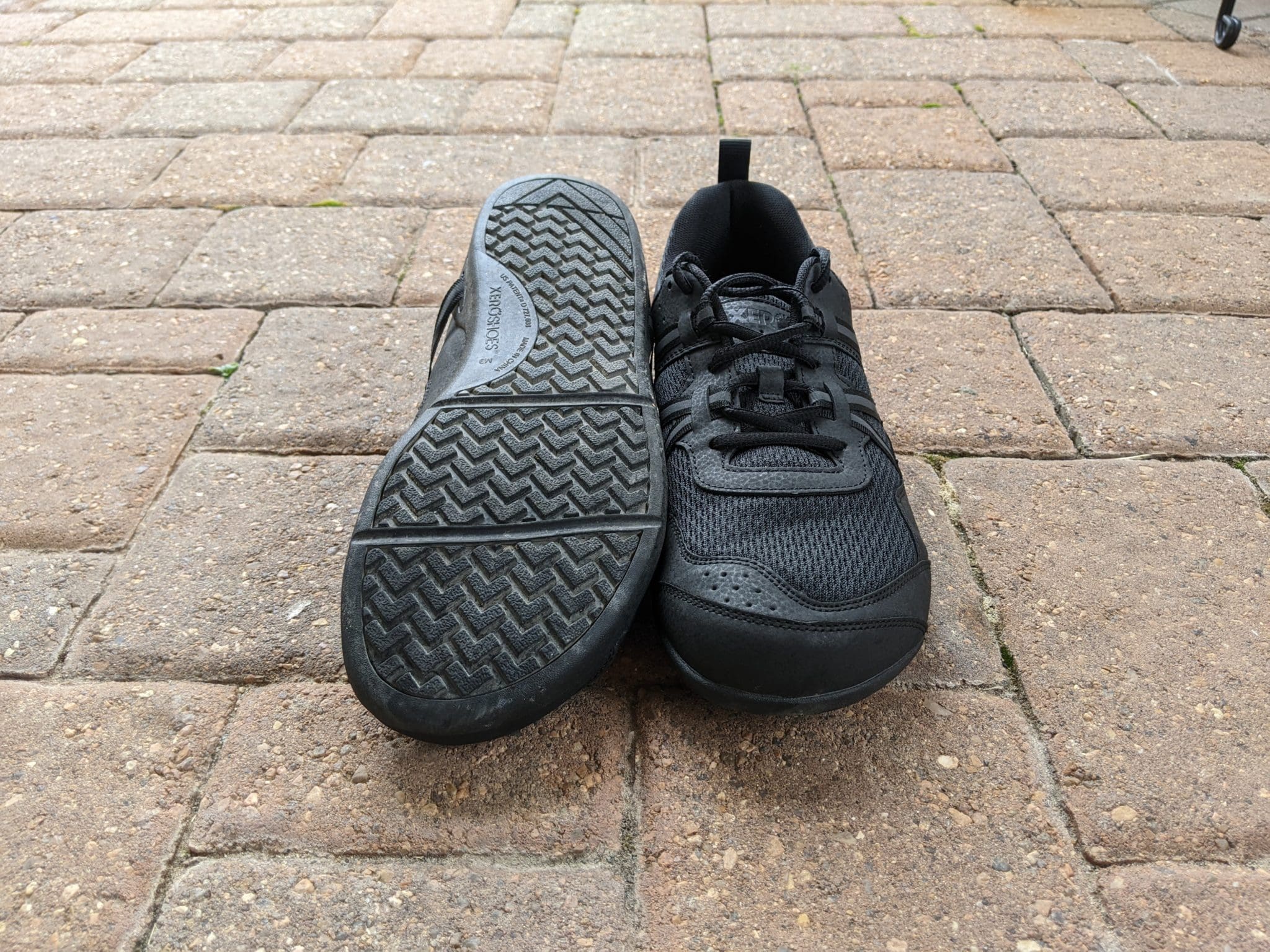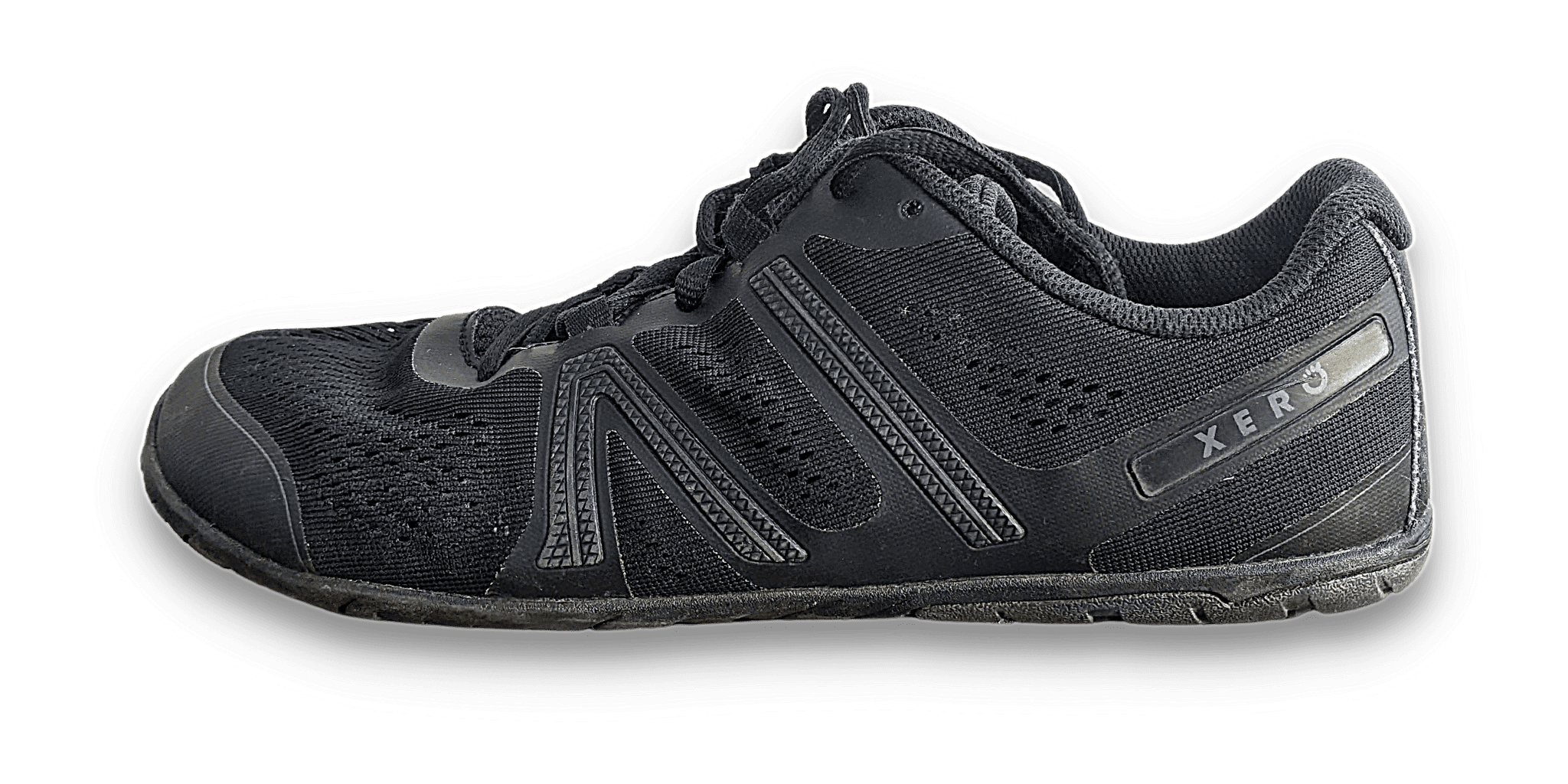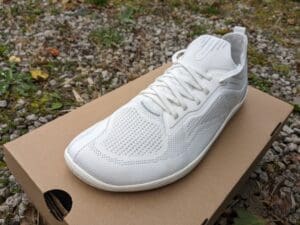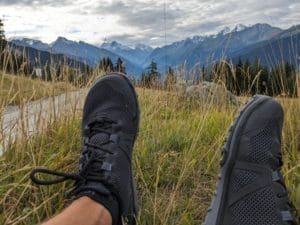If you’ve been looking for a new minimal road shoe, you’ve likely come across Xero Shoes. The issue is, Xero Shoes have a whole bunch of different road options, so how do you choose?
In this comparison, I will help you decide between two of the most popular options in the Xero Shoe lineup: the Prio and the HFS.
Affiliate Disclosure: By clicking through the links on this page and purchasing the products, you’ll be helping me out. This is done because I receive a kickback from the sellers at no extra cost to you! Thank you so much for supporting us!
HFS
Type: Road
Width: Average
Stack height: 5mm rubber outsole + 3.5mm removable insole
Weight: 6.8oz / 193g
Flexible in every direction. My daily road running trainer. Read the full Review
Prio
Type: Road
Width: Average
Stack height: 7.5 mm rubber outsole + 3mm removable insole
Weight: 7.6oz / 215g
Cheap and durable entry-level road running shoes. Read the full Review
If you don’t want to dig into the whole post, here’s a quick dirty rule.
- If you want maximum flexibility and ground feel.
- If you want durability.
But there’s a little more to it than that, so let’s dig into the differences between each shoe, starting with the fit.
In general, Xero Shoes fit deep and wide in the midfoot. But they’re also not the widest toebox in the barefoot market.
Both shoes are averagely wide and have deep toe boxes. Most barefoot shoes boast about their wide-toe boxes, but some forget the depth. With most Xero Shoes, there is ample height in the toe box, allowing your toes to wiggle with complete freedom. If you need every extra inch of toebox space, choose the Prio, or look to another brand like Vivobarefoot.
Which minimal running shoe is for you?
Take a quick 5-question quiz to identify the perfect minimal running shoe for your feet! You'll get both road and trail options based on your answers!
Order ½ to a full-size large in the HFS, but order your standard size in the Prio. There are huge size discrepancies with the HFS; I even run a full size larger than my standard Mens US9. So if you’re a US9 in a Prio, order a US9 ½ in the HFS; for some, you may even move up to a US10. Don’t worry; your feet aren’t growing! 🙂
Both shoes have the same sandal-inspired lacing. Like other shoes in the Xero Shoes line, the lacing is inspired by sandal designs, with straps emanating from the sole and tied with a lace. This works better on the HFS because the upper material is thinner and more flexible. It also helps pull the heel into place, creating a perfect heel lock. The Prio isn’t too bad either, but I’d give the edge to the HFS here.

The HFS works better with a wider midfoot or an oddly shaped foot. Again, because the upper materials are much more flexible, any areas of your foot that might poke out in weird directions are unobstructed. In contrast, the Prio has thicker, more structured materials, which could cause hot spots.
Both shoes have standard lacing with secondary higher eyes for lace locks. If you ever find your foot slipping around in either of the shoes, using a lace lock to secure your foot and heel in place is possible. The laces on the HFS seem a little more fragile, but they’re easy to switch out if you so desire.
XeroShoes.com
HFS
(45-day exchange period)
The most significant difference between the two shoes is the way they feel on your feet.
The HFS is flexible and almost sock-like.
Whereas the Prio is thicker, stiffer but more durable.
And the choice between the two is solely down to personal preference.
Do you want a shoe that’s hard-wearing and will withstand rough and tumble? Or are you looking for that authentic barefoot experience?
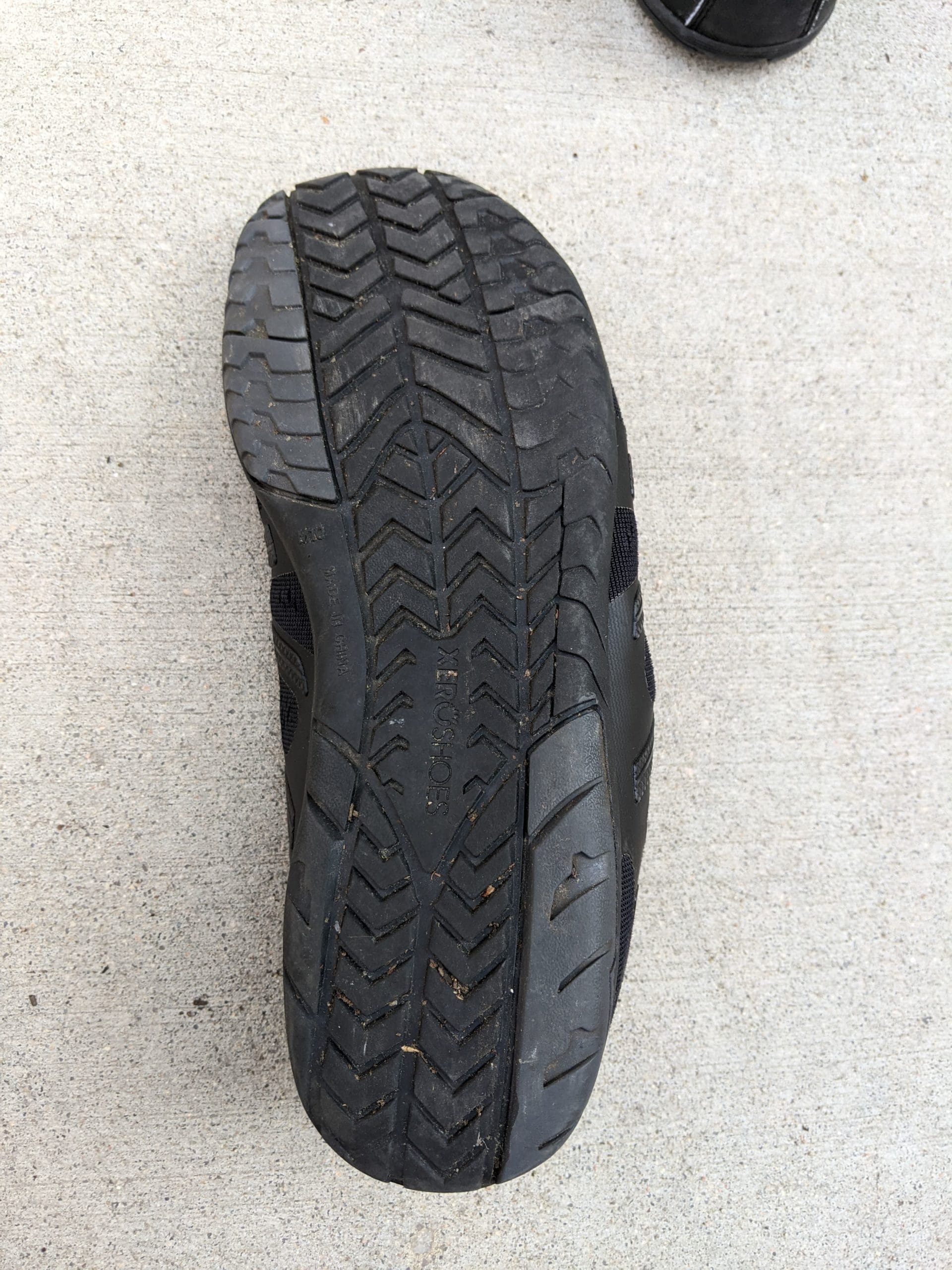
The sole on the Prio differs from the HFS; it’s stiffer and thicker. With a rubber outsole of 7.5mm, the Prio will always have less ground feel than the HFS, which has an outsole of 5mm. And because of that, the Prio needs some wearing in to achieve more flexibility. Whereas the HFS is pliable out of the box and feels like a dream barefoot shoe (in my opinion, of course).
The biggest selling point of the HFS is the lightweight, thin upper. Thinner than some socks I own, the upper of the HFS molds to the foot seamlessly. It allows your foot mechanics to move in any way they wish but also means it lends little support for lateral movements. If you’re playing any court sports or anything that requires a quick change of direction, the Prio is the way to go. The thicker upper materials keep your foot locked in place much better through dynamic movements.
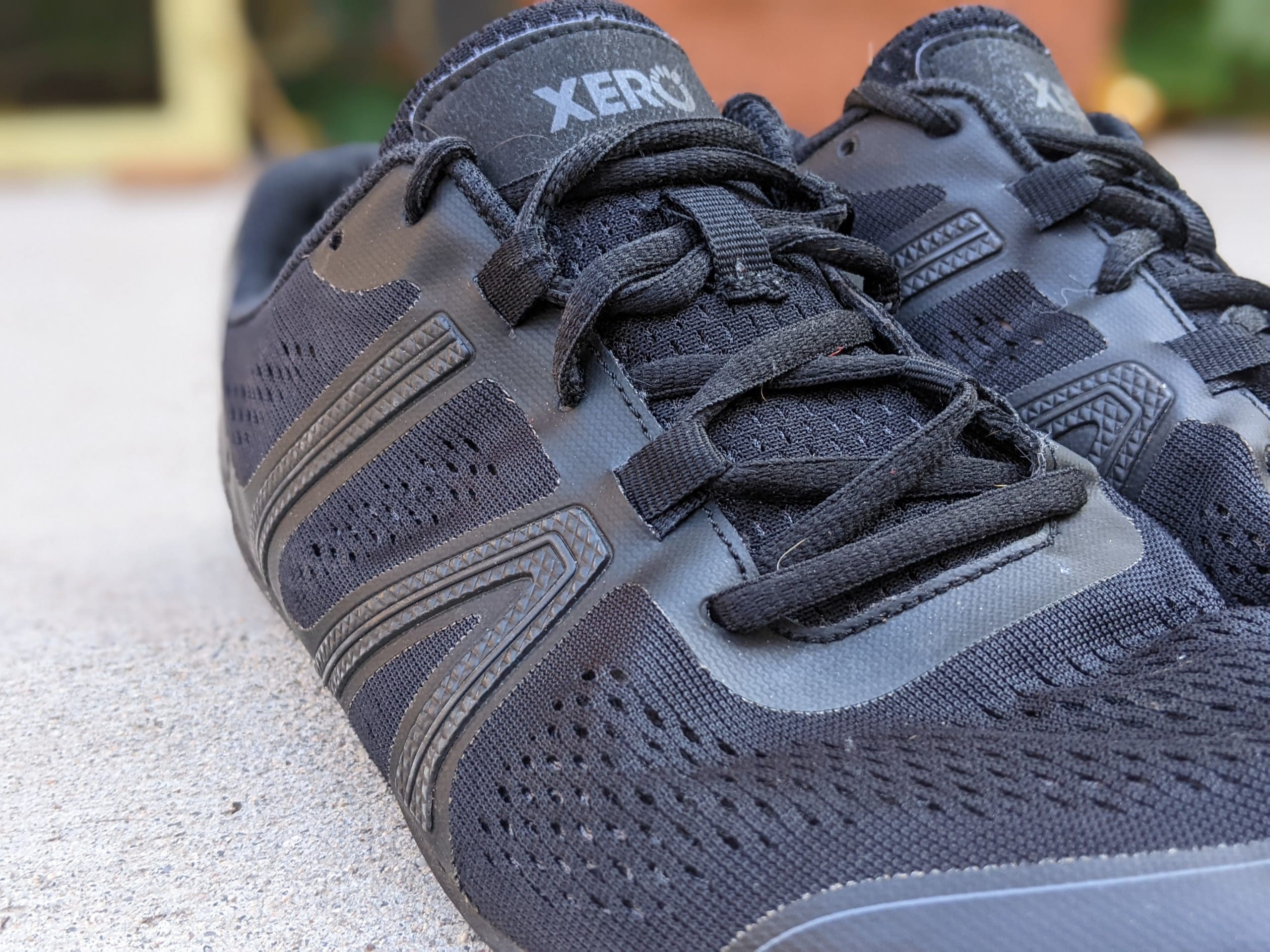
If you ever run on rough gravel or rocks, the Prio offers more protection. Barefoot running is fun but can hurt once you hit some rocky terrain. If you’re ever going to hit gravel or sharp rocks, you’ll want to opt for the Prio. That extra 2.5mm of rubber outsole makes all the difference.
Surprisingly, there’s only an ounce, or 20g, of the weight difference between the Prio and HFS. You’d expect the HFS to weigh much less with fewer materials than the Prio. That said, the weight cut adds to that feather-like feel, and the pliable materials only add to the effect. If you’re aiming for lightweight, the HFS is for you.
XeroShoes.com
Prio
(45-day exchange period)
After you’ve read the rest of the post, I think it’s obvious that the Prio will win the durability round.
Overall, the thicker materials and heavy stitching are made for toughness.
But if you’re only going to take your shoes out on the road for your runs, and there’s little chance of you hitting any trails, the HFS will survive just fine.
I’ve traveled with my pair of HFS’s, and they’re still holding up after being thrown from one bag to the other.
They’re both great; the Prio just has the bulky factor going for it.

With the 5000-mile sole guarantee, Xero Shoes are confident about longevity. All Xero Shoes have the 5000-mile sole guarantee, but I don’t think they can all achieve this. I’m hedging my bets that the Prios can, though. The sole is “just” thick enough to give longevity but also not take away from the barefoot feel.
The first area to break down on the Prio would likely be the ankle cushioning. If there’s any play in your fit, any prolonged rubbing could wear through the soft ankle and cause a hole. Just make sure you have a good fit and lace them up well!
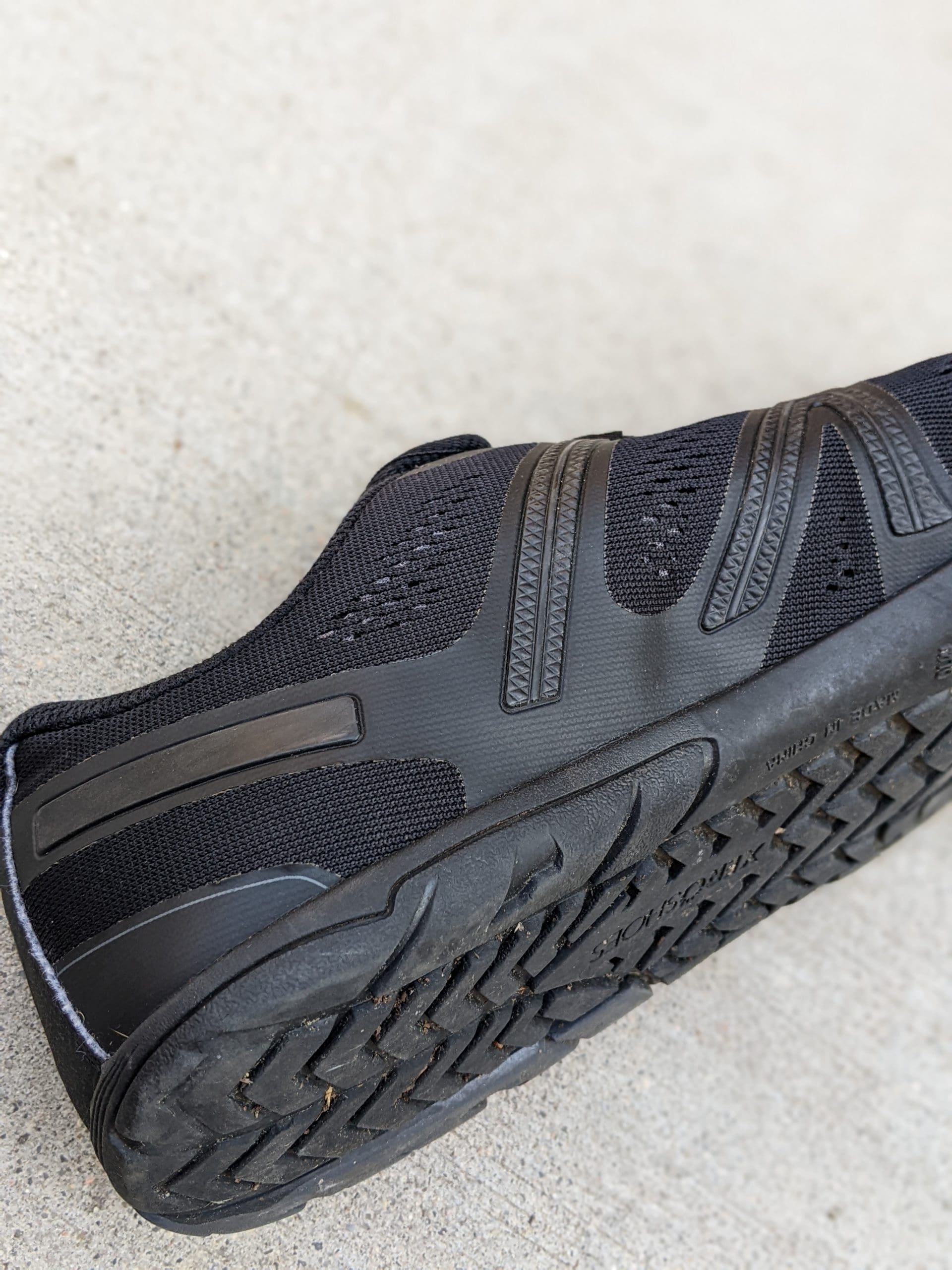
If you catch a branch or sharp rock with the HFS, it could be bye-bye to the upper. As I said before, the upper is thin. I could easily foresee it tearing if you snag it on anything.
Minimal material at the flex points of the HFS could work in its favor. Right up at the toebox, near the ball of the foot, there’s a lack of overlays. This allows the shoe to flex naturally at the joints of your toes but also means there’ll be less stress on the shoe. Often other shoes can break down around the sides of the toe box due to the use of stiffer materials.
XeroShoes.com
HFS
(45-day exchange period)
As I said at the start of this post, the choice between the Prio and HFS is easy.
The HFS is a proper barefoot feel shoe.
And the Prio is the durable brother.
Although the Prio is a little cheaper than the HFS, they’re both relatively inexpensive for the features they offer.
So really, it all comes down to personal preference.
And for me, that’s simple. I want a barefoot feel. So I choose the HFS.
But what’s the decision for you?
HFS
Type: Road
Width: Average
Stack height: 5mm rubber outsole + 3.5mm removable insole
Weight: 6.8oz / 193g
Flexible in every direction. My daily road running trainer. Read the full Review
Prio
Type: Road
Width: Average
Stack height: 7.5 mm rubber outsole + 3mm removable insole
Weight: 7.6oz / 215g
Cheap and durable entry-level road running shoes. Read the full Review
